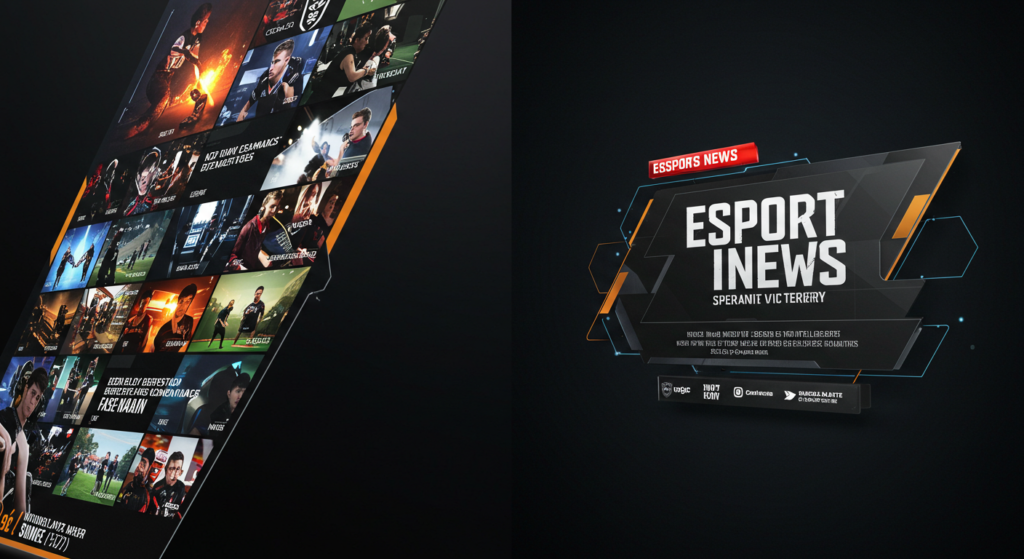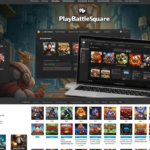Introduction
Esports has grown from a niche hobby into a global entertainment powerhouse, and with that rise comes an increasing demand for fast, reliable, and immersive coverage. This is where esports news dualmedia enters the conversation. The term describes the modern blend of traditional reporting and interactive multimedia that brings fans closer to the action. Unlike conventional sports journalism, which often relies heavily on text and statistics, dualmedia combines live updates, video highlights, social media streams, and detailed analysis in a single platform. The result is a richer, more engaging way to follow tournaments, players, and breaking stories.
The power of esports news dualmedia lies in its ability to capture the fast-paced nature of competitive gaming. Fans don’t just want to read about a match hours later—they want instant replays, commentary clips, and the ability to interact with communities in real time. This dynamic approach to coverage makes esports feel more alive, more accessible, and more engaging than ever before. For players and organizations, dualmedia offers a chance to build stronger connections with their audiences, while sponsors and brands gain new opportunities to showcase their involvement. As the industry continues to evolve, esports news dualmedia will be at the forefront of how stories are told, shared, and remembered.
The Rise of Dualmedia in Esports Coverage
The explosion of esports over the last decade has created a new demand for comprehensive coverage that goes beyond simple match summaries. Fans expect more than just who won or lost—they want to understand the strategy, the personalities behind the players, and the cultural impact of the games. Esports news dualmedia provides exactly that by combining live reporting with interactive features such as embedded streams, social media commentary, and behind-the-scenes footage. This hybrid approach mirrors the way modern audiences consume content, where video, audio, and text all come together to create a fuller picture.
What sets dualmedia apart is its adaptability. For example, a major tournament might feature real-time match reporting alongside highlight reels on social media, while podcasts and interviews give fans deeper insights after the games. This layered storytelling method allows esports enthusiasts to engage with the content in whichever format they prefer. For journalists and media companies, dualmedia opens up new avenues to reach wider audiences, ensuring that stories are not just told but experienced. It is no longer enough to publish an article; today’s esports audience expects to watch, listen, and participate simultaneously.
How Dualmedia Enhances Fan Engagement
Fan engagement is the heartbeat of esports, and dualmedia coverage has transformed how communities interact with the games they love. Traditional written articles remain valuable, but when paired with interactive features such as polls, live chats, and embedded video highlights, fans feel more involved. Esports news dualmedia bridges the gap between passive consumption and active participation, creating experiences that mirror the excitement of live events. This keeps fans invested not only during tournaments but also in the months between them, when content like interviews and analysis fills the gap.
Social media integration is another major factor in fan engagement. Platforms like Twitter, YouTube, and TikTok thrive on short, snappy updates that can go viral in seconds. By weaving these platforms into news reporting, dualmedia gives fans multiple touchpoints to interact with content. A fan might read a full match analysis on a website, then watch a 60-second highlight on Instagram, followed by a player Q&A livestream on Twitch. Each piece of content reinforces the others, keeping the esports community connected and constantly engaged.
Esports Journalism Meets Multimedia Storytelling
Esports journalism has long been about accuracy and timeliness, but dualmedia adds an entirely new dimension: storytelling through multiple formats. Articles are now accompanied by embedded highlight reels, infographics, and interactive brackets that give readers a more complete understanding of events. This multimedia storytelling not only appeals to younger audiences—who are used to consuming content in short, visual bursts—but also helps break down complex strategies or meta shifts in a digestible way. A graphic showing a team’s draft strategy, for instance, can explain more in seconds than a page of text could.
Another key advantage of dualmedia is its ability to humanize the players. Esports athletes often face the misconception of being faceless gamers, but multimedia coverage showcases their personalities, struggles, and triumphs. Video interviews, personal vlogs, and documentary-style features add emotional depth to stories that might otherwise feel like mere numbers on a scoreboard. By blending traditional reporting with these personal narratives, esports news dualmedia creates a more compelling and relatable picture of the industry as a whole.
The Role of Dualmedia in Global Esports Expansion
Esports is a global phenomenon, and dualmedia plays a crucial role in bridging cultural and linguistic gaps. Traditional reporting often struggles with regional limitations, but multimedia formats can transcend barriers more easily. For example, highlight clips or infographic summaries can be understood across languages, while subtitles and live translation tools make interviews and broadcasts more accessible. This inclusivity allows esports news dualmedia to connect fans from North America to Asia, Europe to South America, in a way that purely text-based journalism cannot.
Moreover, dualmedia helps amplify local tournaments and regional talent to a global audience. Smaller events that might once have been overlooked can now gain visibility through live streams, short-form video recaps, and bilingual coverage. This democratization of coverage ensures that the global esports ecosystem continues to thrive, with fans discovering new players and teams from regions they might never have explored otherwise. By broadening access and storytelling, dualmedia strengthens the worldwide esports community.
Technology Driving Esports News Dualmedia
Advancements in technology are the backbone of esports news dualmedia. From high-speed internet and 5G networks to streaming platforms and AI-driven translation tools, technology enables the seamless delivery of real-time content across multiple channels. Fans can now watch a match on Twitch, receive instant score updates on Twitter, and read in-depth analyses within minutes—all powered by cutting-edge infrastructure. This technological ecosystem ensures that esports coverage remains as fast-paced as the games themselves.
Virtual and augmented reality are also beginning to shape the dualmedia landscape. Imagine watching a tournament where you can switch between player perspectives in real time or explore a 3D map showing strategic plays as they happen. These immersive tools not only enhance the viewing experience but also offer journalists new ways to tell stories. By embracing emerging technologies, esports news dualmedia stays ahead of the curve, creating experiences that keep audiences coming back for more.
Challenges and Opportunities Ahead
While esports news dualmedia brings countless benefits, it also faces challenges. The sheer volume of content can lead to information overload, making it harder for fans to sift through what truly matters. Journalists must strike a balance between speed and quality, ensuring that real-time updates don’t come at the cost of accuracy. Additionally, monetization remains a hurdle. With so much free content circulating online, finding sustainable business models—whether through subscriptions, sponsorships, or ad revenue—is essential for long-term growth.
At the same time, these challenges present opportunities. As esports matures, there is growing demand for credible, in-depth journalism that rises above clickbait headlines. Outlets that successfully blend speed with substance will earn trust and loyalty from fans. Moreover, brands and advertisers increasingly recognize the value of esports audiences, opening the door for partnerships that can fund and expand dualmedia coverage. Those who adapt quickly will not only survive but thrive in this evolving media landscape.
Conclusion
Esports news dualmedia is more than a buzzword—it represents the next era of competitive gaming coverage. By combining the strengths of traditional reporting with the dynamism of multimedia storytelling, it offers fans richer, more interactive experiences than ever before. From real-time match updates and highlight reels to in-depth interviews and global accessibility, dualmedia ensures that the world of esports feels alive, connected, and constantly evolving.
As esports continues its meteoric rise, dualmedia will remain central to how stories are told and consumed. Fans, players, and brands alike benefit from this shift, making it a win for the entire ecosystem. The challenge now is for journalists and media outlets to harness the full potential of dualmedia while maintaining credibility and quality. For anyone invested in the future of gaming, keeping an eye on the evolution of esports news dualmedia isn’t just recommended—it’s essential.







